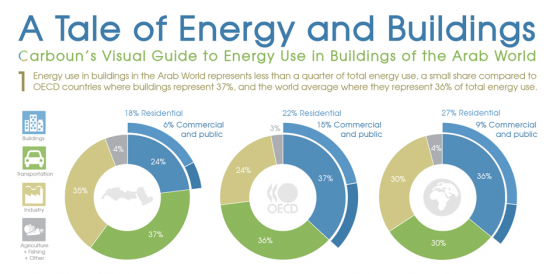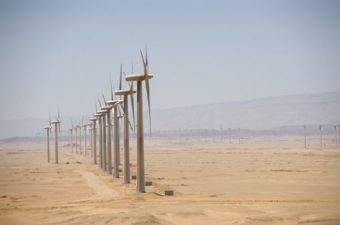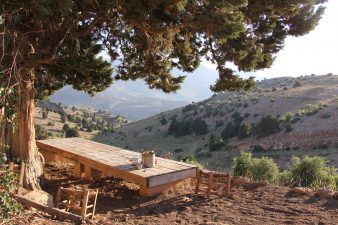 Tunisian buildings are the most energy intense in the Arab world.
Tunisian buildings are the most energy intense in the Arab world.
Carboun has released a powerful infographic which details how energy is consumed in the Middle East. Using data received from personal contributions, the World Bank and the International Energy Agency, founder Karim Elgendy has mapped out energy use by country in each of the following sectors: buildings, food production, industry and transportation. An architect and sustainability consultant based in London, Elgendy also breaks down how “resource-rich” and “resource-poor” countries consume energy differently. The results may surprise you.
Tunisia’s dubious win
Tunisian buildings consume more energy than any other Arab world country – about 43 percent of the country’s overall energy consumption. This is higher than the OECD (Organisation for Economic Co-operation and Development) average, which is about 37%. Lebanon, Algeria and Jordan follow close behind.
On the whole, buildings in the Arab world, which includes Maghreb countries, account for 1% less overall energy consumption than OECD countries combined, which seems contrary to popular thought. Turkey and Israel are the only countries from the Middle East -North African region that are members of the OECD economic group.
Also, buildings in the United Arab Emirates and Qatar are on the lowest end of the energy consumption spectrum, which comes as a surprise since the oil-producing countries are so frequently blamed for being the biggest power hogs because of subsidies.
This doesn’t mean they aren’t using a lot of energy, however, it just means that a greater proportion of it is being spent elsewhere.
In Qatar, commercial and residential buildings only use about 10% of the country’s overall energy, but industry accounts for roughly half of the country’s overall energy consumption.
Rich countries versus poor countries
Elgendy claims that resource-rich and resource-poor countries use energy very differently. In Saudi, for example, a resource-rich country, the oil and desalination industries usurp a greater percentage of energy whereas in resource-poor Egypt, food production dominates instead.
Likewise, in resource-rich countries, commercial buildings consume more energy than residential buildings, whereas the opposite is true for resource-poor countries.
Riadh Bhar, who is an Ecofys consultant in Germany, wrote of the infographic: “Really nice graphics… I´m not 100% sure if they are that reliable. It´s not that easy to find good statistics in the region.”
It’s true. Finding good data is difficult, but Carboun is helping to lead us out of the dark.


